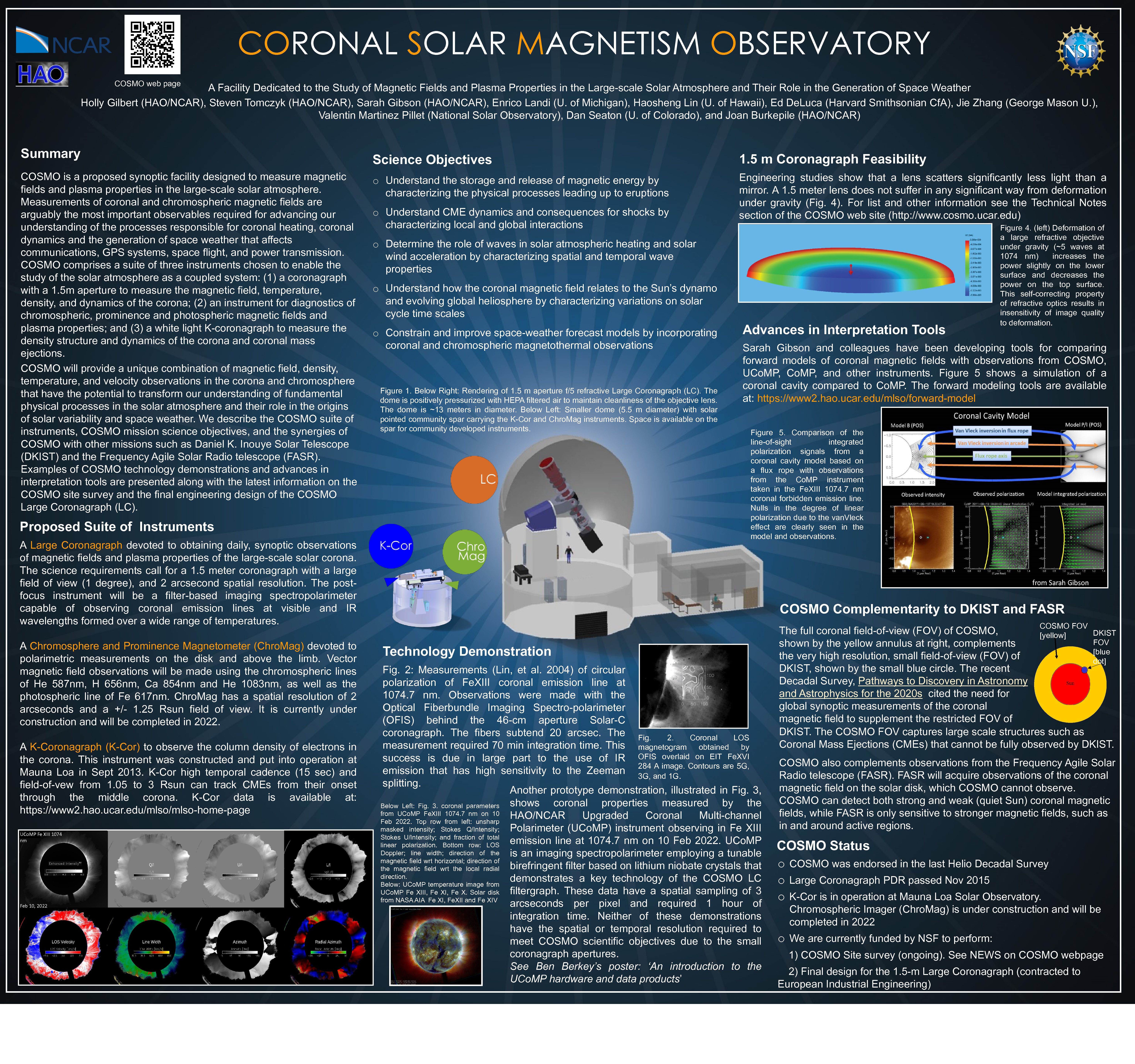Authors: Holly Gilbert (HAO), Steven Tomczyk (HAO), Sarah Gibson (HAO, Enrico Landi (U. of Michigan), Haosheng Lin (U. of Hawaii), Ed DeLuca (Harvard Smithsonian CfA), Dan Seaton (U. of Colorado, Jie Zhang (George Mason U.), Joan Burkepile (HAO)
COSMO is a proposed synoptic facility designed to measure magnetic fields and plasma properties in the large-scale solar atmosphere. Measurements of coronal and chromospheric magnetic fields are arguably the most important observables required for advancing our understanding of the processes responsible for coronal heating, coronal dynamics and the generation of space weather that affects communications, GPS systems, space flight, and power transmission. COSMO comprises a suite of three instruments chosen to enable the study of the solar atmosphere as a coupled system: (1) a coronagraph with a 1.5m aperture to measure the magnetic field, temperature, density, and dynamics of the corona; (2) an instrument for diagnostics of chromospheric, prominence and photospheric magnetic fields and plasma properties; and (3) a white light K-coronagraph to measure the density structure and dynamics of the corona and coronal mass ejections.
COSMO will provide a unique combination of magnetic field, density, temperature, and velocity observations in the corona and chromosphere that have the potential to transform our understanding of fundamental physical processes in the solar atmosphere and their role in the origins of solar variability and space weather. We describe the COSMO suite of instruments, COSMO mission science objectives, and the synergies of COSMO with other missions such as Daniel K. Inouye Solar Telescope (DKIST) and the Frequency Agile Solar Radio telescope (FASR). Examples of COSMO technology demonstrations and advances in interpretation tools are presented along with the latest information on the COSMO site survey and the final engineering design of the COSMO Large Coronagraph (LC).


